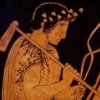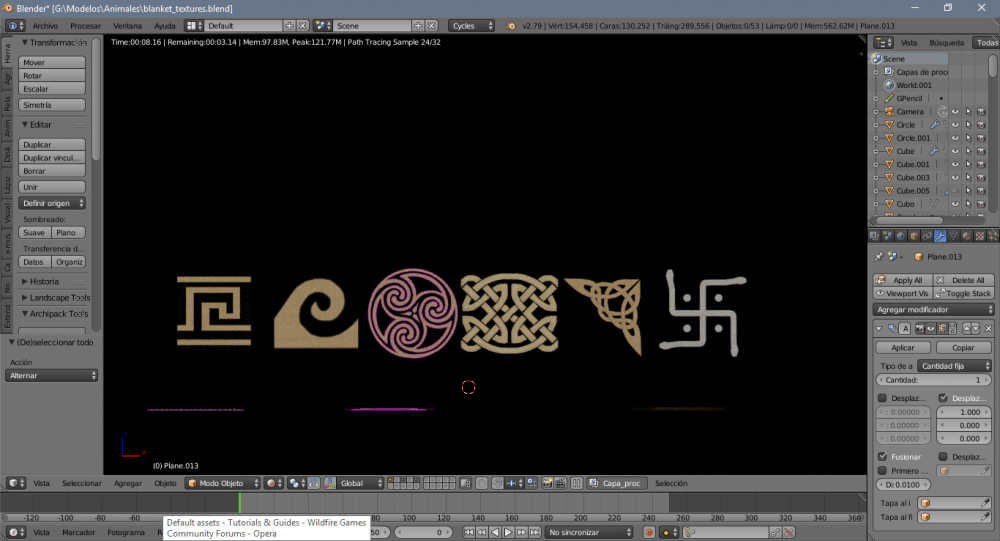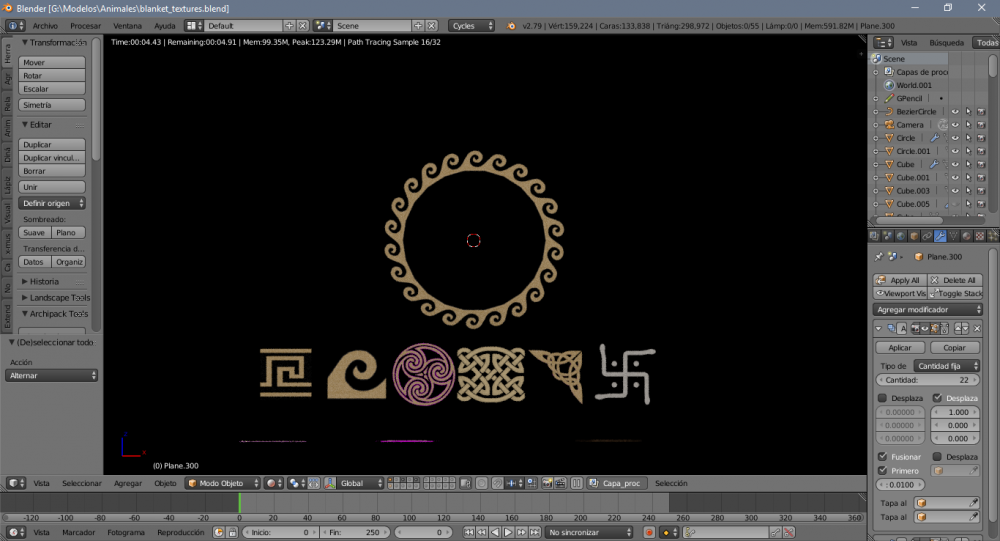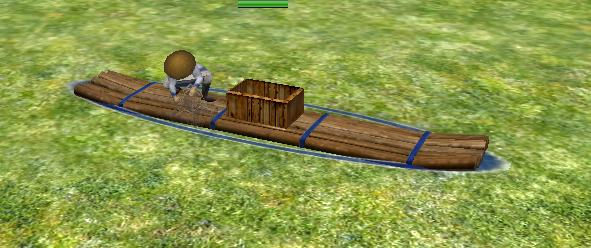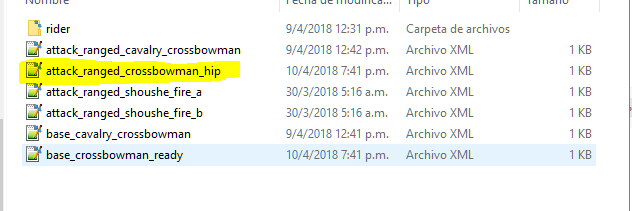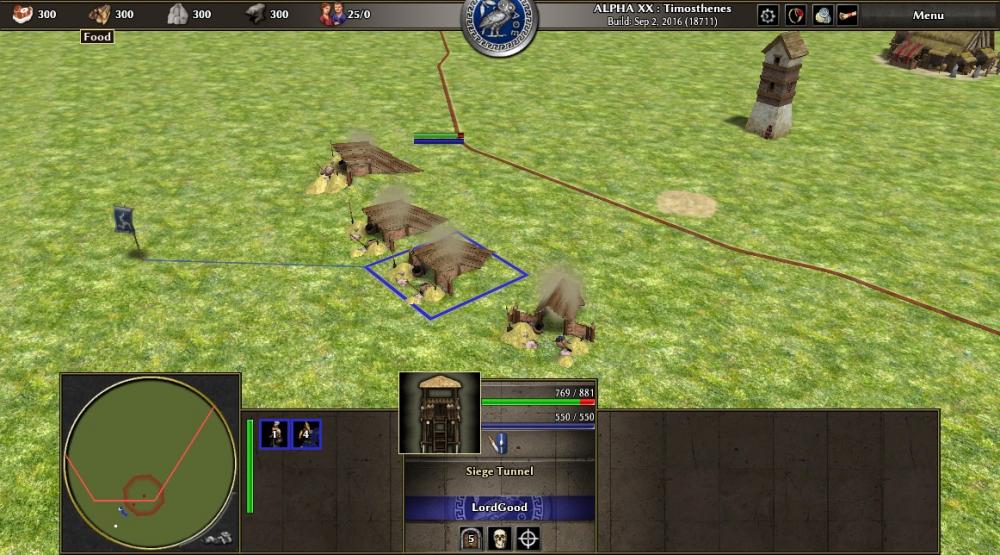Leaderboard
Popular Content
Showing content with the highest reputation on 2018-04-11 in all areas
-
A22 is indeed not in the backports A23 is around the corner so I don't think it makes sense to bug them again about A22 now. You didn't install cmake so you cannot build the bundled NVTT. Just install cmake If building from source is an issue, you can try a flatpak as a last resort: https://flatpak.org/ Follow the setup steps: https://flatpak.org/setup/Debian/ Then install 0 A.D. : https://flathub.org/apps/details/com.play0ad.zeroad3 points
-
My dear Gameboy if you had read the post above you would have noticed someone is working on it2 points
-
2 points
-
2 points
-
Classic period "Caana" at Caracol. It stands at 42 meters (140 feet) high. Altar 13 at Caracol. AD 830 The Classic period (c. AD 250900) was one of the peak of large-scale construction and urbanism, the recording of monumental inscriptions, and significant intellectual and artistic development, particularly in the southern lowland regions.[9] The people developed an agriculturally intensive, city-centered civilization consisting of numerous independent city-states some subservient to others.[8] This includes the well-known cities of Caracol, Tikal, Palenque, Copán, Xunantunich and Calakmul, but also the lesser known Lamanai, Dos Pilas, Cahal Pech, Uaxactun, Altun Ha, and Bonampak, among others. The Early Classic settlement distribution in the northern Maya lowlands is not as clearly known as the southern zone, but does include a number of population centers, such as Oxkintok, Chunchucmil, and the early occupation of Uxmal. During this period the Maya population numbered in the millions. They created a multitude of kingdoms and small empires, built monumental palaces and temples, engaged in highly developed ceremonies, and developed an elaborate hieroglyphic writing system.[10] The social basis of this exuberant civilization was a large political and economic intersocietal network (world system) extending throughout the Maya region and beyond to the wider Mesoamerican world. The political, economic, and culturally dominant core Maya units of the Classic Maya world system were located in the central lowlands, while its corresponding dependent or peripheral Maya units were found along the margins of the southern highland and northern lowland areas. But as in all world systems, the Maya core centers shifted through time, starting out during Preclassic times in the southern highlands, moving to the central lowlands during the Classic period, and finally shifting to the northern peninsula during the Postclassic period. In this Maya world system, the semi-peripheral (mediational) units generally took the form of trade and commercial centers.[11] The most notable monuments are the stepped pyramids they built in their religious centers and the accompanying palaces of their rulers. The palace at Cancuén is the largest in the Maya area, but the site has no pyramids. Other important archaeological remains include the carved stone slabs usually called stelae (the Maya called them tetun, or "tree-stones"), which depict rulers along with hieroglyphic texts describing their genealogy, military victories, and other accomplishments.[12] The Maya civilization participated in long distance trade with many of the other Mesoamerican cultures, including Teotihuacan, the Zapotec, and other groups in central and gulf-coast Mexico. In addition, they had trade and exchanges with more distant, non-Mesoamerican groups, for example the Taínos of the Caribbean islands. Archeologists have found gold from Panama in the Sacred Cenote of Chichen Itza.[13] Important trade goods included cacao, salt, seashells, jade, and obsidian. This is copan in my country1 point
-
I have a problem:the problem is that the army in the wall can attack the enemy outside the wall from the wall, and they should go out of town to attack the enemy outside the wall. The enemy outside the city wall can attack the army and unit within the walls of the city. The enemy outside the wall should destroy the wall to attack the army and the units in the wall. This is a problem for a Pathfinder. Please repair it. Thank you.1 point
-
Both ranged and melee units can attack through walls, just at a different max range. It's not necessarily a pathfinder problem. Units can see through walls and attack through walls. It would probably be a big performance impact if we would add it, so were not really eager to tackle this problem while we still have bigger issues. Can you upload a screenshot of the attack?1 point
-
Hello @Diptangshu and welcome to the forums, Trample damage is planned but hasn't been implemented yet. Someone made a patch some time ago but didn't get around to finishing it yet. As all of us here for free and in our free time, we can't give a precise date as to whether or when that feature will be implemented.1 point
-
Ah right I totally forgot about this one Someone should update it and commit it at some point. Just like silk road.1 point
-
1 point
-
That's the basic idea, but community feedback makes it clear this hacky way of doing this won't settle well. More coding is likely needed for this to be a viable siege weapon for vanilla. Fine as is for experimental mod use though1 point
-
1 point
-
can you install this binary in mint? sudo add-apt-repository ppa:wfg/0ad sudo apt-get update sudo apt-get install 0ad1 point
-
1 point
-
1 point
-
I'm not sure if i follow but what is planned is to make a new siege type weapon for attacking "underground" theroical speaking the units dig under the building and attack it, but since thats is not possible from a coding view yet, that means a projectile 100% accurate every certain amount of time like you said, the zerg when they dig and become untargeteable and attack every unit who stands above it (they couldn't see the unit whitout true vision). So the weapon or the tunnel is useless alone, but when garrisoned inside its being used.1 point
-
1 point
-
1 point


.thumb.png.ce58cea22940c255f5b0a735d5abee36.png)
